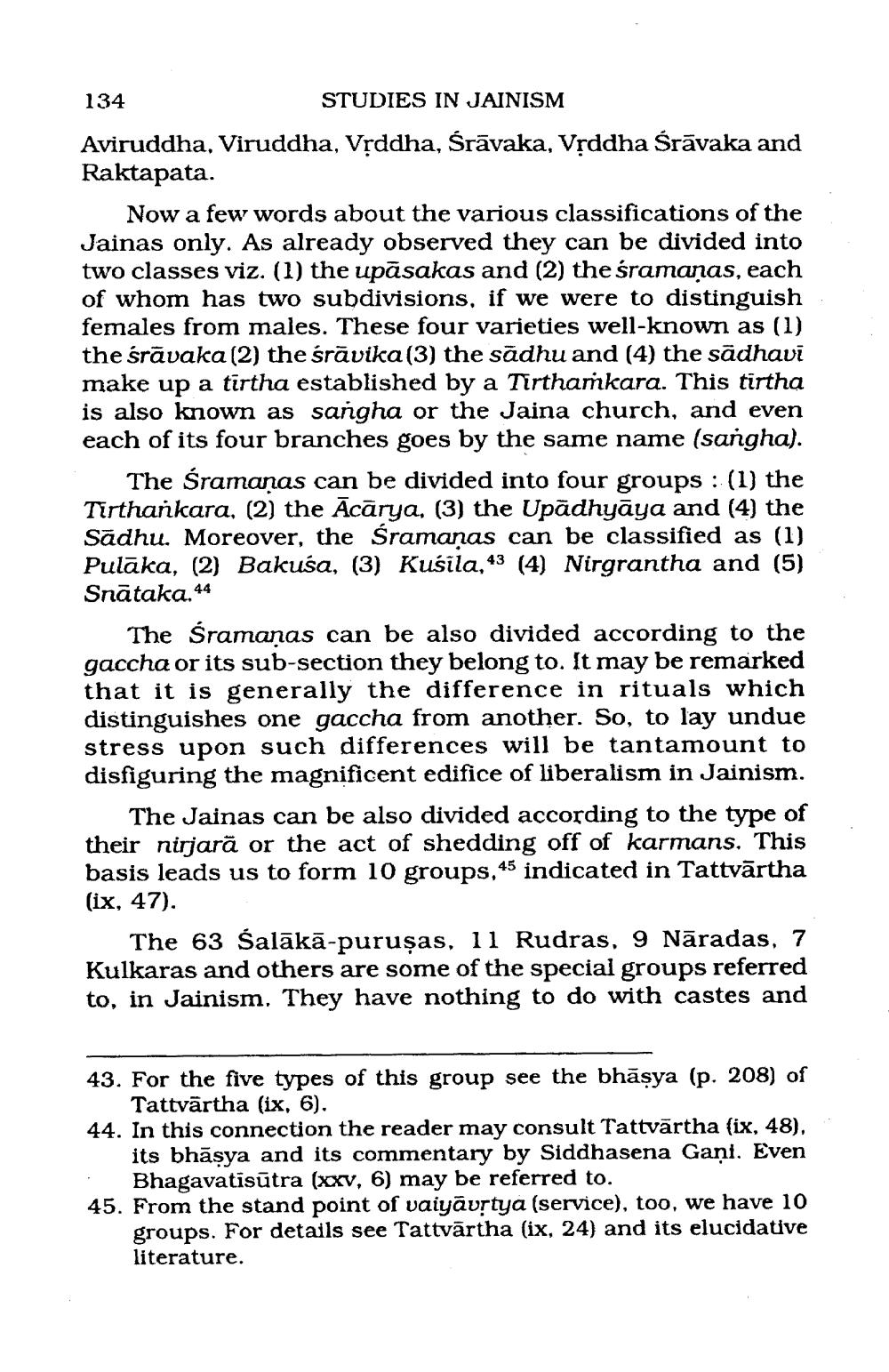________________
134
STUDIES IN JAINISM
Aviruddha, Viruddha, Vṛddha, Śrāvaka, Vṛddha Śrāvaka and Raktapata.
Now a few words about the various classifications of the Jainas only. As already observed they can be divided into two classes viz. (1) the upasakas and (2) the śramanas, each of whom has two subdivisions, if we were to distinguish females from males. These four varieties well-known as (1) the śrāvaka (2) the śrāvika (3) the sadhu and (4) the sādhavi make up a tirtha established by a Tirthamkara. This tirtha is also known as sangha or the Jaina church, and even each of its four branches goes by the same name (sangha).
The Śramaṇas can be divided into four groups: (1) the Tirthankara, (2) the Acārya, (3) the Upadhyāya and (4) the Sādhu. Moreover, the Śramanas can be classified as (1) Pulāka, (2) Bakusa, (3) Kušila,43 (4) Nirgrantha and (5) Snātaka.44
The Śramanas can be also divided according to the gaccha or its sub-section they belong to. It may be remarked that it is generally the difference in rituals which distinguishes one gaccha from another. So, to lay undue stress upon such differences will be tantamount to disfiguring the magnificent edifice of liberalism in Jainism.
The Jainas can be also divided according to the type of their nirjarä or the act of shedding off of karmans. This basis leads us to form 10 groups, 45 indicated in Tattvārtha (ix, 47).
The 63 Śalākā-puruṣas, 11 Rudras, 9 Nāradas, 7 Kulkaras and others are some of the special groups referred to, in Jainism. They have nothing to do with castes and
43. For the five types of this group see the bhāṣya (p. 208) of Tattvärtha (ix, 6).
44. In this connection the reader may consult Tattvärtha (ix, 48), its bhāṣya and its commentary by Siddhasena Gani. Even Bhagavatisūtra (xxv, 6) may be referred to.
45. From the stand point of vaiyavṛtya (service), too, we have 10 groups. For details see Tattvärtha (ix, 24) and its elucidative literature.




